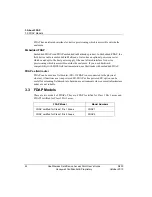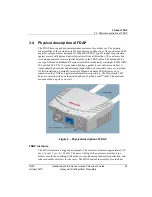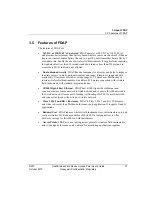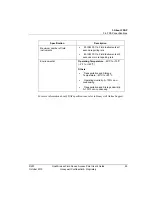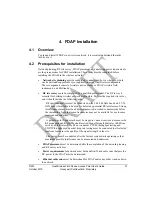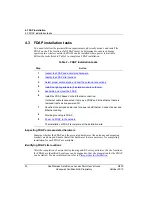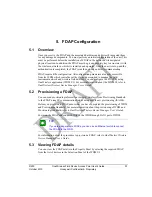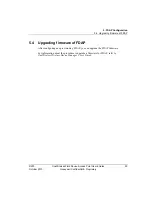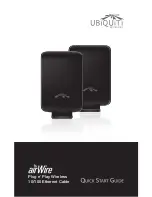
3. About FDAP
3.5. Features of FDAP
R200
OneWireless Field Device Access Point User's Guide
27
October 2010
Honeywell Confidential & Proprietary
3.5 Features of FDAP
The features of FDAP are:
24V DC or 110/230V AC powered
: FDAP operates at 24V DC or 110/230V AC
and provides better latency than battery based wireless sensor mesh network. It has an
improved wireless sensor battery life and you get 10 years transmitter battery life by 1
sec update rate. Enable the use of wireless field instruments for applications requiring
fast update rates (less than 10 seconds) and short latency (less than 250 ms) and in
areas where Wi-Fi radios are not allowed.
Dual antenna diversity
: FDAP has dual antennas for diversity and helps to improve
read rate success in multi-path environment and range. It improves range and data
availability. It increases ISA100 coverage range by 1.5 times over Multinodes or
routing wireless field instruments. It enables a 450 meters connection with wireless
field instruments with standard integral antennas.
10/100 Gigabit Fast Ethernet
: FDAP has 10/100 Gigabit Fast Ethernet and
connects wireless sensor network to wired network and connects ISA100 network to
the wired network. It forms a self-forming, self-healing ISA100.11a mesh network
and connects network to the wired or wireless network.
Class 1 Div 2 and Div 1 Enclosure
: FDAP is Class 1 Div 2 and Div 1 Enclosure
and it has lower cost than Multinode for sensor only application. It supports O and G
applications.
Reduced Cost
: FDAP reduces wireless field instrument cost, infrastructure cost, and
cost per wireless I/O. Reduces number of ISA100.11a routing devices to offer
wireless coverage for ISA100.11a field instruments
Access Points
: FDAP acts as a routing access points for wireless field instruments
and it is designed for sensor-only network for monitoring applications segment.












